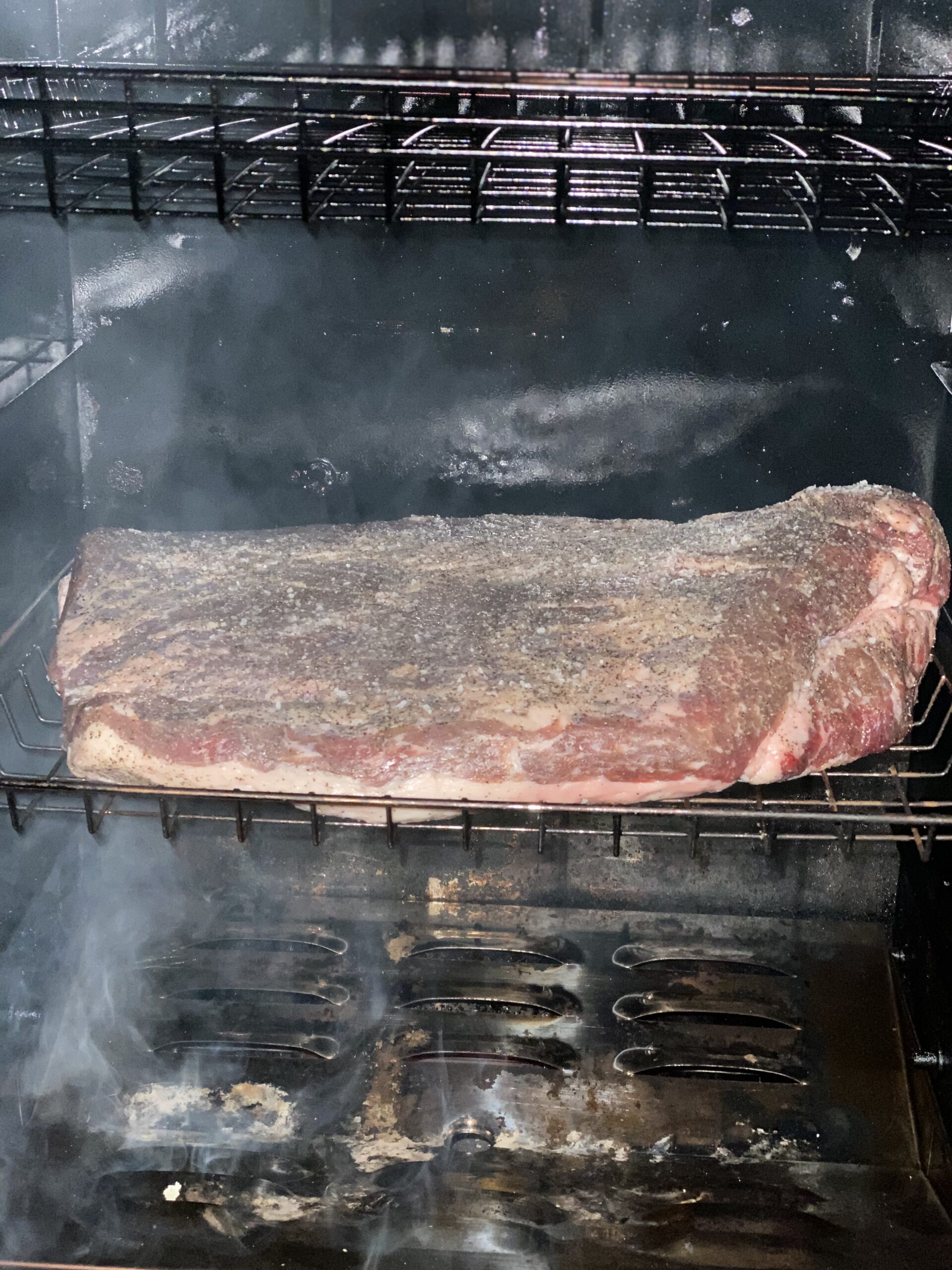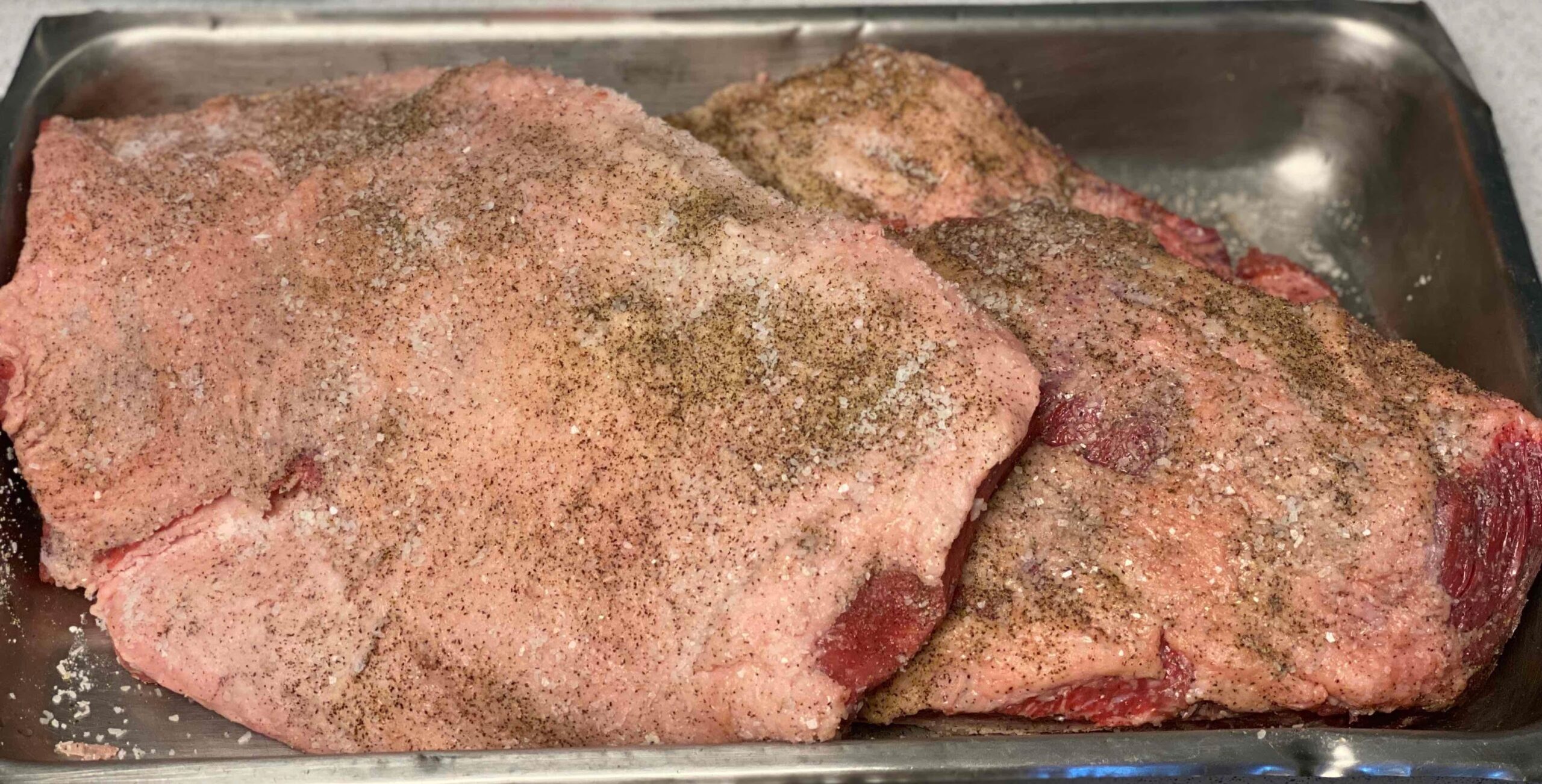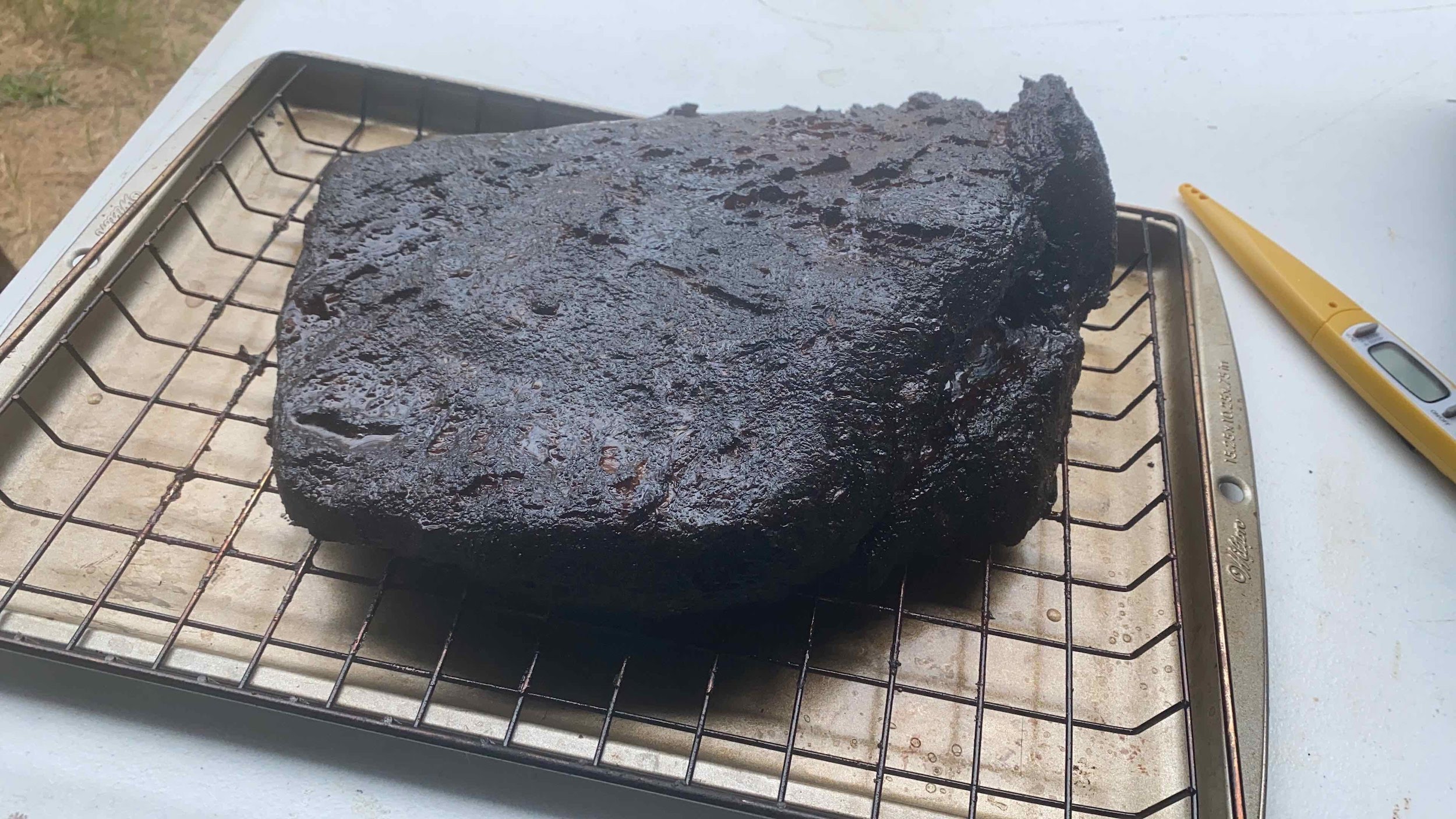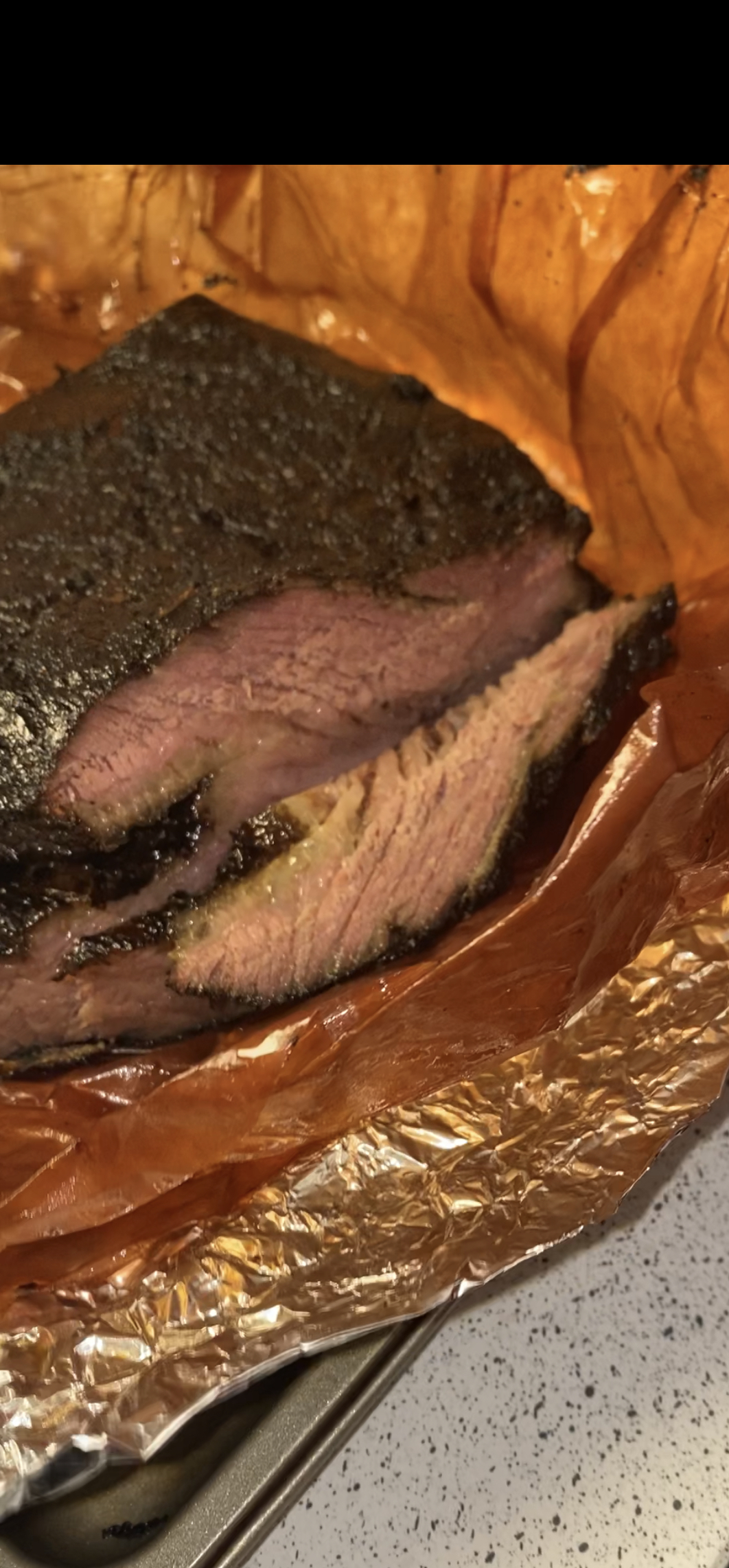I met Chef Shane recently and we got to chatting about smoking brisket.
Smoking brisket isn't an uncommon thing to talk about but he had some interesting things to say about his method for smoking brisket.
For starters, Shane, like me is originally from the northeastern United States.
Smoking brisket is far less understood in the Northeast than it is in the south.
It's lightyears apart from the brisket Shane is getting in Austin, TX, which he currently calls home.
Here are a few things chef Shane had to say about the last brisket he cooked:
Smoking Brisket: A True Test of Patience
I’m an East Coast guy; raised in Delaware, I went to college and lived in Rhode Island for 10 years. I moved to Texas in 2019.
I'm a huge foodie, chef, and been in the restaurant industry my entire career. If there's one thing I've loved as much as being a culinary professional, it's BBQ and brisket.
I guess I'm fortunate. Lucky for me, my dad had a passion for cooking as well.
We had a smoker growing up.
Some of my fondest childhood memories were when we were all gathered around the smoker, anxiously anticipating something delicious for dinner.
I ended up following in those footsteps once I was on my own and always look forward to smoking foods and cooking outside.
New England can't hold a candle to authentic Texas Barbecue
The East Coast and New England have some really good BBQ spots, sure, but after I moved to Texas I quickly realized it isn’t true Texas BBQ.
Authentic BBQ joints down here are almost as popular as Dunkin Donuts are anywhere in the Northeast. If the shoe were on the other foot, it would be like expecting to get as good of a lobster roll in Austin as you can in Boston!
As a chef living in Texas, I am currently unemployed due to COVID. Unemployment has given me plenty of free time and the opportunity to smoke some amazing meals.
Although I love smoking various things, there is something special about smoking a brisket!
It’s the true test of time.
If nothing else, I constantly need to remind myself that brisket cooks low and slow. In other words, it cooks very slowly over low temperatures.
Back East, most outdoor cooking consists of things like burgers, hot dogs, and steaks where food cooks rather quickly over a gas grill.
When you're grilling, you have to constantly tend to your food. But when you are smoking the idea is to keep the lid shut. There's a saying around here that if you’re looking you’re not cooking, and once you get a taste of Texas barbecue you'll understand.
I use and love my electric Bradley smoker.
To each his/her own with the choice of smoker and wood. As long as it tastes delicious, that’s what matters!
I tend to use a blend of hickory and mesquite. Brisket is very easy to do, but a lot can go wrong if that makes sense.
There is a method, and the more briskets you smoke the more comfortable you get.
It starts with a well-trimmed brisket.
I trim the brisket so only about a ½ inch of fat cap remains. Do this by removing as much of the deckle fat as possible with a sharp knife.
Austin Pitmaster Aaron Franklins has a video for a great visual of how he trims a brisket.
Trim a brisket while it’s cold, then season while it’s warming. Brisket fat is hard to work with the warmer it gets, so trim it while it’s fresh out of the icebox.
When it comes to seasoning, I stay super basic with just a 50-50 blend of salt and pepper. I like to trim and season about 12 hours ahead of time, then re-season again before smoking at 250F.
For me, brisket is all about how it looks and feels.
Every cut is different, but as a general rule, I've had great success smoking about 75 minutes per pound of meat. So I plan for a solid 12 hours of smoking when cooking a 10-pound brisket.
With my smoker, I prefer to cook brisket with the fat cap down. Although there are many arguments over if it's best to cook a brisket with the fat side up or down, I cook this way because I prefer not to disturb the bark of the presentation side when it becomes time for slicing.
If it’s a 10lb brisket, I typically smoke for about seven hours at 250F.
Briskets almost always stall while cooking. The stall is caused by evaporation that happens during the cooking process and it can be very frustrating if not downright scary if you let it bother you.
Every brisket is different, but when the meat hits somewhere between 157F and 162F the temperature just stalls. The temperature can remain in this range for hours without any fluctuation. But like high tide, or the setting sun this too shall pass.
Once the brisket gets over its dreaded stall, I drop my smoker to 225F. I find that if I open the smoker as little as possible, it will take about another five and a half hours to finish.
I do not wrap my brisket, as I want to disrupt it as little as possible. The smoke ring a brisket can develop is great for presentation, but my briskets aren’t going to a competition.
I like to pull that beautiful, bark-encrusted piece of food art out at 190F and wrap with a good butcher paper.
Now it's time to be patient as we’re almost there!
Let the brisket rest insulated, in a cooler for at least 45 minutes-hour, or longer if you can stand it. I tend to go longer.
The resting is where some additional magic happens.
The fat and juices start to really come back together. This is where you get an additional pop of amazing flavor.
Don't worry about the brisket getting cold. Once in an insulated cooler, the carry-over cooking will keep the internal temperature of the brisket high. Probably too hot to handle with your bare hands even after several hours.
When it comes time to slice, be sure to cut against the grain with a good, serrated knife or a slicing knife and enjoy!
Were you aware that pork brisket is a thing too? The article on What is Pork Brisket and How to Cook it explains some of my experiences cooking a brisket other than beef.
Chatting with Chef Shane made me think I should jot down some of my experiences making brisket similar to the time I made a holiday turkey on the grill or even when I very successfully did sous vide pork ribs. Here I share some of my favorite brisket cooking hacks and tricks.
I'd love to hear your experiences with cooking brisket. Feel free to leave a comment below.




Love the regional differences!